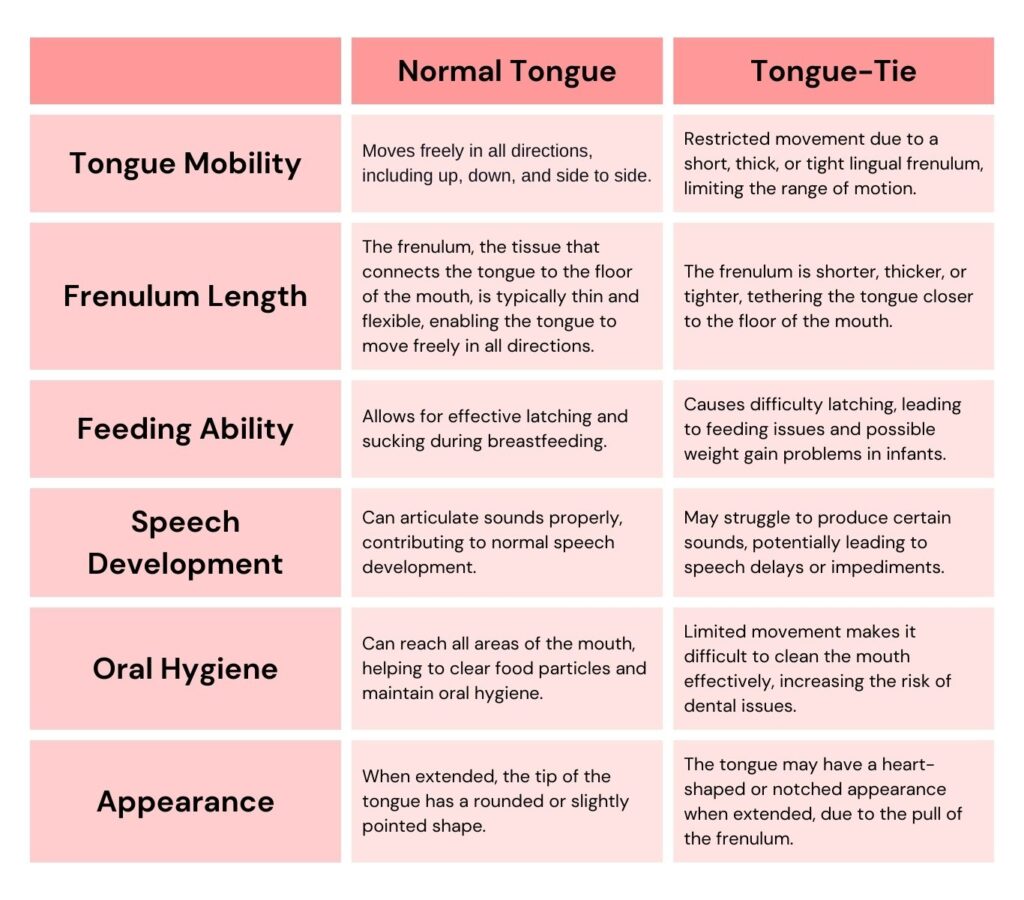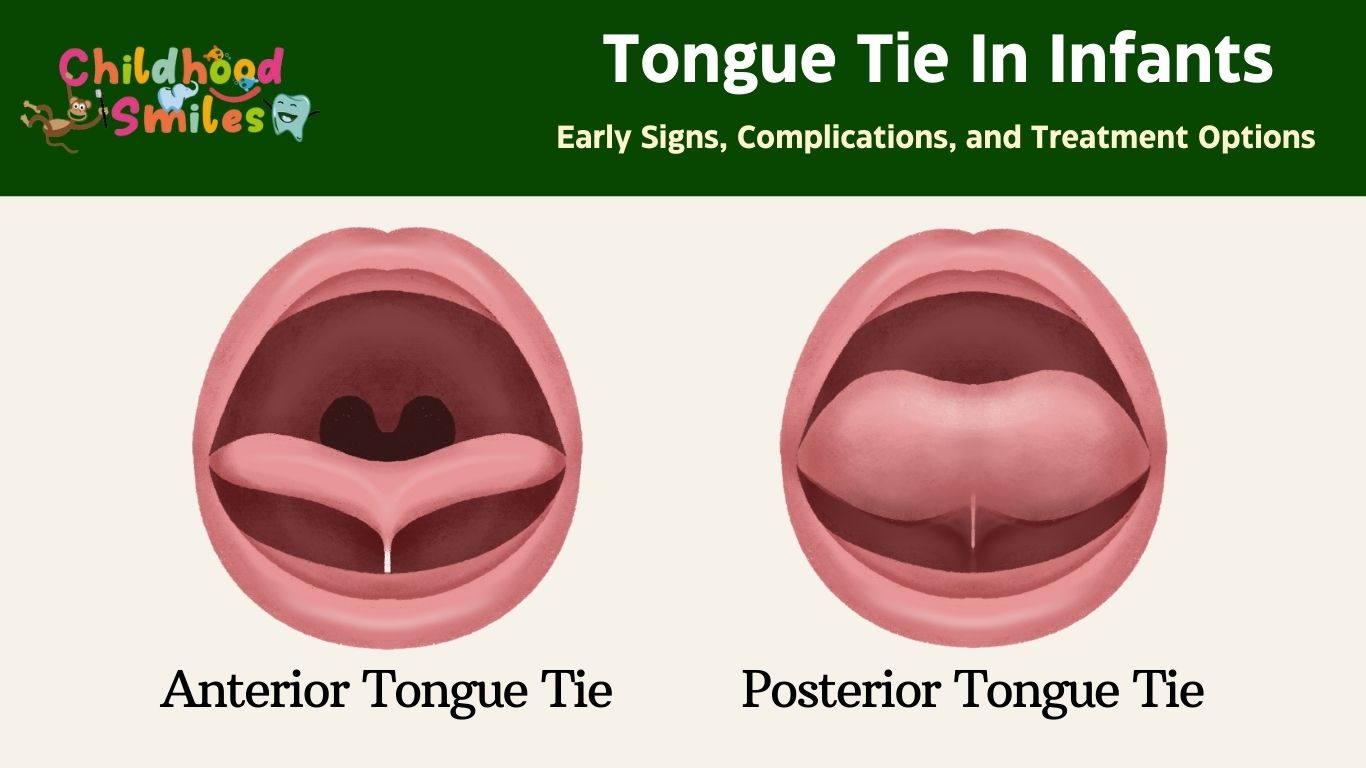Tongue Tie In Infants: Early Signs, Complications, and Treatment Options.
Tongue-tie, also known as ankyloglossia, is a condition that can significantly impact a baby’s ability to breastfeed, eat, and eventually speak. This condition occurs when the thin piece of tissue (lingual frenulum) under the tongue is unusually short or tight, restricting tongue movement. Early identification is crucial, as untreated tongue-tie can lead to complications such as poor weight gain, speech difficulties, and dental issues. In this blog, we’ll explore the early signs of tongue-tie, the potential complications it can cause, and the treatment options available to help your baby thrive.
What is a Tongue tie?
Tongue tie in infants, also known as ankyloglossia, is a condition where the tissue connecting the baby’s tongue to the floor of the mouth is unusually short, thick, or tight. This restricts the tongue’s range of motion, making it difficult for the infant to breastfeed effectively. Babies with tongue tie may struggle with latching, causing discomfort for the mother and inadequate milk intake for the baby. Over time, this can lead to poor weight gain and feeding issues. Additionally, if left untreated, tongue tie can impact speech development and oral hygiene as the child grows.
Difference Between a Normal Tongue and Tongue-Tied Tongue

Two Types of Tongue Tie
Anterior Tongue Tie
- Location: Anterior tongue tie occurs when the frenulum, the band of tissue connecting the tongue to the floor of the mouth, is attached near the front of the tongue, close to the tip.
- Appearance: This type is more visible, often making the tongue appear heart-shaped when extended.
- Diagnosis: Easier to identify during a physical examination because of its more prominent placement.
Posterior Tongue Tie
- Location: Posterior tongue tie involves the frenulum being attached further back on the tongue, closer to the base.
- Appearance: Less obvious visually, as the frenulum is shorter and deeper under the tongue, making it harder to detect.
- Diagnosis: More challenging to diagnose due to its less visible nature, often requiring a skilled practitioner to identify.
Signs & Symptoms of Tongue Tie
Symptoms of Tongue Tie in Mothers
- Painful Breastfeeding: Nipple pain, soreness, or damage due to the baby’s poor latch and ineffective suction.
- Prolonged Feeding Sessions: Feeding times that are longer than usual because the baby struggles to get enough milk.
- Frequent Feeding: The baby may want to nurse more often because they aren’t getting enough milk during each session.
- Low Milk Supply: Inadequate milk removal during breastfeeding can lead to a decrease in milk production over time.
- Nipple Trauma: Cracked, bleeding, or blistered nipples resulting from the baby’s improper latch.
- Breast Infections: Increased risk of mastitis or thrush due to ineffective milk removal and nipple trauma.
Symptoms of Tongue Tie in Infants
- Difficulty Breastfeeding: Trouble latching, frequent feedings, or fussiness during feeding sessions.
- Poor Weight Gain: Inadequate milk intake leads to slow or insufficient weight gain.
- Clicking Sounds While Feeding: A clicking noise while breastfeeding, indicates a poor latch.
- Colic symptoms/Gassiness: Swallowing air during feeding due to improper latch, leading to colic symptoms (like clenched fists, arched back, and knees being pulled up to the tummy) and gas.
- Heart-Shaped Tongue: The tip of the tongue appears notched or heart-shaped when extended.
- Chewing onto nipples
- Falls asleep during feeds
- Mouth Breathing: Preference for mouth breathing over nasal breathing due to tongue position.
Symptoms of Tongue Tie in Toddler
- Speech Difficulties: Trouble pronouncing certain sounds, such as “t,” “d,” “z,” “s,” “th,” and “l,” which may cause delayed speech development or unclear speech.
- Restricted Tongue Movement: Difficulty sticking out the tongue, lifting it to the roof of the mouth, or moving it side to side.
- Difficulty Eating: Struggles with chewing or swallowing solid foods, leading to picky eating habits or a preference for soft foods.
- Gagging or Choking: Tendency to gag or choke on food due to improper tongue movement during swallowing.
- Mouth Breathing: Preference for mouth breathing, especially during sleep, due to restricted tongue movement.
- Gap Between Lower Teeth
Symptoms of Tongue Tie in Children
- Breastfeeding challenges in the past
- Speech difficulties or delays in language development.
- Difficulty chewing or avoiding solid foods.
- Slow eating and taking longer to finish meals.
- Frequent colds, coughs, and allergies.
- Digestive issues like reflux or colic.
- Night time teeth grinding (bruxism).
- Restlessness and difficulty focusing.
- Daytime drowsiness and fatigue.
- Misaligned teeth or orthodontic concerns.
- Loud snoring or labored breathing during sleep.
Other Ways to Check if Your Child Has a Tongue Tie
To determine if your baby has a tongue tie, observe their tongue’s shape when they cry or lift their tongue. If the tip of their tongue looks heart-shaped, this might be a sign of tongue tie. You may also notice that your baby:
- Struggles to move their tongue from side to side.
- The tongue can’t reach the upper gums or the roof of the mouth.
- They aren’t able to extend their tongue past the lower gums.
- Has difficulty curling their tongue towards the nose or licking their lips.
You can also examine the frenulum (the thin band of tissue under the tongue). When your baby cries or yawns, the tongue pulls back, making it easier to see if the frenulum is tight and short.
What Causes Tongue Ties?
The exact causes of tongue tie are not entirely understood, but several factors may contribute:
- Family History: Tongue tie often runs in families. If a parent had it, their child might have it too.
- Development Before Birth: Normally, the frenulum loosens up before a baby is born, allowing the tongue to move freely. In cases of tongue tie, this process might not happen completely, leaving the frenulum too tight or short.
- Environmental Influences: Although rare, factors during pregnancy, like certain nutritional issues or exposure to toxins, might affect how the frenulum develops.
- Related Health Conditions: Sometimes, tongue tie is seen in babies with other health conditions, but it can also occur in babies who are otherwise completely healthy.
Complications of Untreated Tongue Tie
If tongue tie is left untreated, it can lead to several complications as a child grows:
- Feeding Problems: During breastfeeding, a baby needs to keep their tongue over the lower gum while sucking. If the tongue can’t move properly or stay in the correct position, the baby may chew on the nipple instead of sucking. This can cause considerable nipple pain and make it harder for the baby to receive enough breast milk. Over time, ineffective breastfeeding can result in poor nutrition and hinder the baby’s growth and development.
- Speech Difficulties: As the child grows, tongue ties can cause speech problems, making it difficult to pronounce certain sounds clearly. This may result in delayed speech development.
- Dental Issues: Restricted tongue movement can contribute to dental problems, such as gaps between the lower front teeth, misaligned teeth, and an increased risk of cavities due to difficulty cleaning the mouth properly.
- Oral Hygiene Challenges: Difficulty in moving the tongue can make it hard to clear food particles, leading to poor oral hygiene and an increased risk of tooth decay and gum problems.
- Swallowing Difficulties: Tongue tie can interfere with swallowing, making it uncomfortable or even painful for a child to eat, which might lead to picky eating habits or avoidance of certain foods.
- Sleep Issues: Some children with untreated tongue tie may develop sleep problems, such as snoring or sleep apnea, due to the tongue’s restricted movement and its impact on breathing.
- Future Health Problems: If left untreated, tongue tie can contribute to chronic issues, such as persistent mouth breathing, which can affect overall health and development.
Treatment for Tongue Tie
While some cases of tongue-tie do not require intervention, others may benefit from treatment to improve function and quality of life. Here are the common treatment options for tongue-tie.
- Feeding Problems: During breastfeeding, a baby needs to keep their tongue over the lower gum while sucking. If the tongue can’t move properly or stay in the correct position, the baby may chew on the nipple instead of sucking. This can cause considerable nipple pain and make it harder for the baby to receive enough breast milk. Over time, ineffective breastfeeding can result in poor nutrition and hinder the baby’s growth and development.
- Speech Difficulties: As the child grows, tongue ties can cause speech problems, making it difficult to pronounce certain sounds clearly. This may result in delayed speech development.
- Dental Issues: Restricted tongue movement can contribute to dental problems, such as gaps between the lower front teeth, misaligned teeth, and an increased risk of cavities due to difficulty cleaning the mouth properly.
- Oral Hygiene Challenges: Difficulty in moving the tongue can make it hard to clear food particles, leading to poor oral hygiene and an increased risk of tooth decay and gum problems.
- Swallowing Difficulties: Tongue tie can interfere with swallowing, making it uncomfortable or even painful for a child to eat, which might lead to picky eating habits or avoidance of certain foods.
- Sleep Issues: Some children with untreated tongue tie may develop sleep problems, such as snoring or sleep apnea, due to the tongue’s restricted movement and its impact on breathing.
- Future Health Problems: If left untreated, tongue tie can contribute to chronic issues, such as persistent mouth breathing, which can affect overall health and development.

